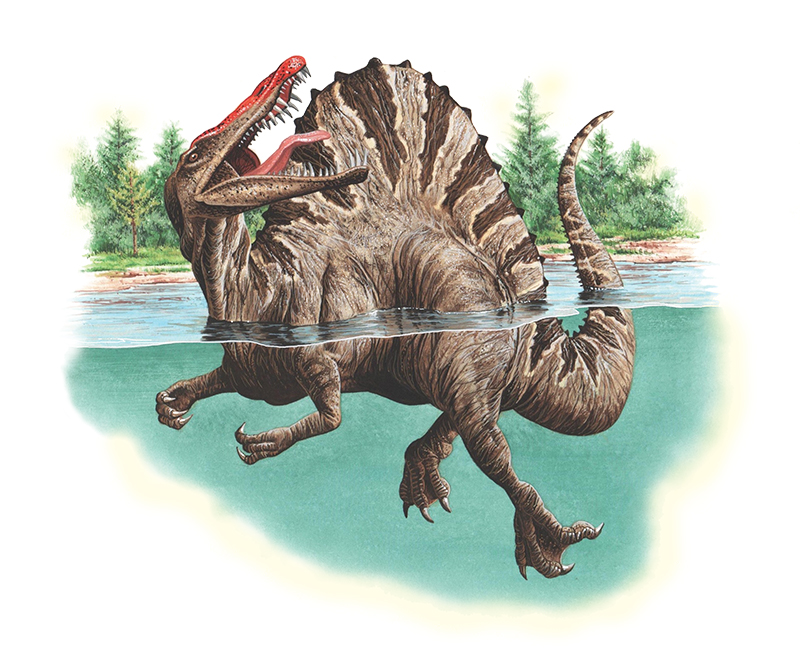Spinosaurus << `spyn` oh SAWR uhs >> was a gigantic dinosaur that had a large sail on its back. It was probably the longest of the theropods, a group that includes Tyrannosaurus and other meat-eating dinosaurs. Scientists estimate that Spinosaurus grew to about 50 feet (15 meters) long, making it the longest predatory dinosaur known. It lived in what is now northern Africa about 100 million years ago during the Cretaceous Period.

In 1915, German paleontologist Ernst Stromer von Reichenbach published a description of fossils that he referred to as a new genus and species, Spinosaurus aegyptiacus. The fossils, consisting of vertebrae (backbones) and an elongated lower jaw, had been excavated in 1912 by Stromer’s field collector Richard Markgraf in the Bahariya Oasis, near Cairo, Egypt. The fossils were housed in the Bavarian State Collection for Paleontology in Munich, Germany. Years later, a bombing raid over Munich toward the end of World War II (1939-1945) destroyed the building and all the fossils.
In 2014, paleontologists uncovered a new partial skeleton of a Spinosaurus in a cliffside in Morocco. This new find provided anatomical evidence that the enormous dinosaur had a semiaquatic (partially in water) lifestyle, unlike all other known theropods. Spinosaurus had long bony spines on its back. These spines were covered with skin, creating a large sail. Spinosaurus also had long jaws and conical teeth for catching and eating fish; flat claws for walking on soft river sediment and for paddling; and a long, flexible tail. In addition, the leg bones of Spinosaurus were compact, similar to other vertebrates (animals with backbones) that have a semiaquatic or aquatic lifestyle.
Scientists are not completely sure why Spinosaurus had a large sail on its back. The sail may have been used for display or to attract a mate.
